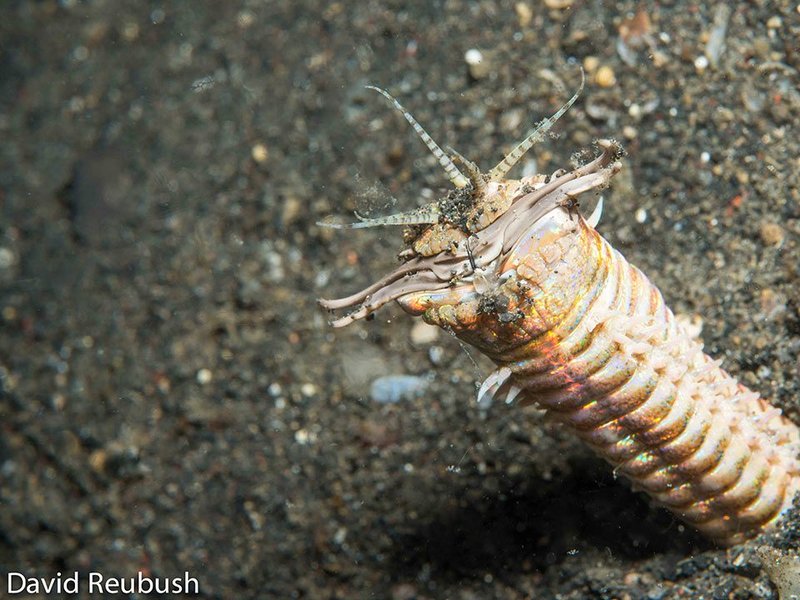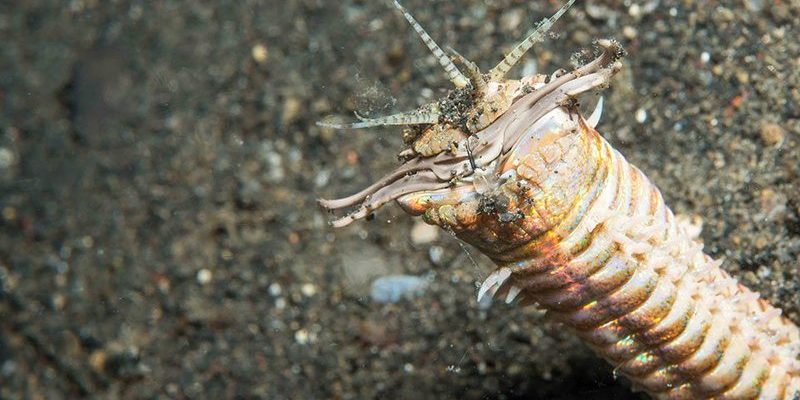
As living beings, Bobbit worms are part of a delicate ecosystem. Like many creatures beneath the waves, they have their own methods of survival and defense. Understanding whether these worms are toxic or venomous can help us appreciate their role in the ocean and how they interact with other marine life. So let’s dive into the depths of this topic and uncover the facts about Bobbit worms!
What Are Bobbit Worms?
Bobbit worms belong to the family Eunicidae and are known scientifically as *Eunice aphroditois*. These worms are often called **”Bobbit worms”** after a rather strange story involving a human mishap. With their vibrant colors and impressive size, they can be quite a sight (though more often, they’re buried in the sand).
You might spot them sticking out of the sediment with only their head exposed, waiting patiently to ambush any unsuspecting prey. They primarily feed on fish, crustaceans, and other small marine animals, using their sharp jaws—which can snap down with impressive speed—to capture their meals. The hunting technique they use is a dramatic example of patience in the wild.
To picture them, think of a furry hot dog with a mouth full of teeth. They blend in well with their surroundings, camouflaging themselves from both predators and prey. But the question remains: **how do they defend themselves?**
What’s the Difference Between Toxins and Venom?
Before we get into whether Bobbit worms release toxins or venom, let’s clarify what these terms mean. **Toxins** and **venoms** are both harmful substances, but they have different roles and delivery methods.
– **Toxins** are poisonous substances produced by organisms. They often affect the cells or processes of other living beings when ingested, inhaled, or absorbed.
– **Venom**, on the other hand, is a specialized type of toxin that is actively delivered through a bite, sting, or other specialized anatomical structures. Think of it like a syringe that injects poison into a target.
Bobbit worms, like many marine animals, play a unique role in their environments. Understanding how they defend themselves can help us determine if they fall into the toxin or venom category.
Do Bobbit Worms Have Venom?
Yes, Bobbit worms do have a form of venom! When they catch their prey, they don’t just rely on their considerable size or sharp jaws; they also inject venom to subdue their meals. The venom helps to immobilize their catch quickly, making it easier to swallow.
This venom can cause a painful sting and may lead to swelling, redness, or irritation in humans. It’s worth noting that while their venom is harmful to smaller marine creatures, it’s not lethal to humans—thankfully! So, while you might not want to handle one, you don’t have to worry about a Bobbit worm being deadly.
The effectiveness of their venom comes from the biology of the worm itself. The venom is produced in specialized glands and delivered through their teeth during a bite. This means if you ever found yourself on the receiving end of a Bobbit worm’s attack, it could be a painful experience, but one that is unlikely to be life-threatening.
Are Bobbit Worms Toxic?
Unlike some marine creatures that produce toxins in their tissues or skin, Bobbit worms aren’t considered toxic in the same way. They do not have harmful effects when touched, but it’s essential to remember they still possess that venom for capturing prey.
In nature, being toxic often means an animal can deter predators just by existing. For Bobbit worms, their formidable appearance and burrowing behavior serve more as a defense mechanism than any toxic properties. They stay hidden and ambush their prey rather than relying on being toxic to survive.
If you happen to see one while snorkeling, just appreciate it from a distance. Their form of defense is more about speed and surprise than poison.
The Role of Bobbit Worms in Their Ecosystem
Bobbit worms play a significant role in the marine ecosystem. Their hunting techniques contribute to population control among fish and other small marine animals. By preying on these creatures, they help maintain balance within their habitat.
Conversely, they are also prey for larger predators, such as fish and certain seabirds. This relationship illustrates the circular nature of marine life, where each creature has its place and purpose. Bobbit worms, through their unique hunting methods and adaptations, fit into this intricate puzzle.
Additionally, their burrowing behavior helps to aerate the ocean floor. This process contributes to the overall health of the marine environment. By mixing the sediments, Bobbit worms indirectly promote the growth of various plants and organisms that rely on healthy soil for survival.
Understanding the Risks of Handling Bobbit Worms
While Bobbit worms are generally not a threat to humans, it’s wise to exercise caution if you encounter one. Handling them can result in a painful bite due to their venom, as mentioned earlier.
If you’re interested in marine life, it’s best to observe these worms from a respectful distance. Many marine enthusiasts enjoy watching Bobbit worms in their natural habitat without disturbing them. If you’re exploring tide pools or snorkeling, always prioritize safety and respect wildlife.
Here are a few tips for safely observing Bobbit worms and other marine animals:
- Keep your hands to yourself—avoid touching any marine creatures.
- Use a camera to capture their beauty rather than trying to catch or handle them.
- Educate yourself about the local marine life before exploring new areas.
- Always wear appropriate gear when swimming or snorkeling.
So, do Bobbit worms release toxins or venom? The answer is that they possess venom used to capture prey, but they aren’t toxic in the way many people might assume. These amazing creatures are an essential part of their ecosystem, serving both as predators and prey. By understanding them better, we can appreciate the complexity of marine life and the roles creatures like the Bobbit worm play beneath the waves.
Next time you hear about a Bobbit worm, you’ll know there’s much more to these fascinating creatures than their unusual name and appearance. Whether it’s their hunting style, venomous capabilities, or their role in the ocean, these worms definitely deserve a spot on your list of ocean oddities!

